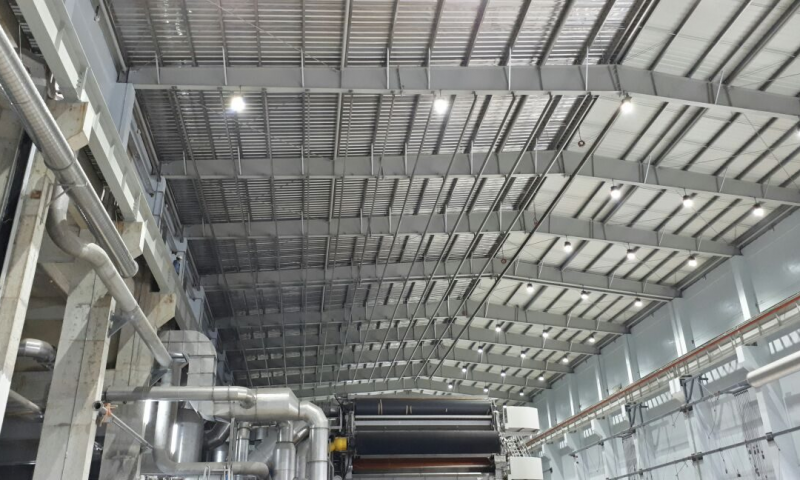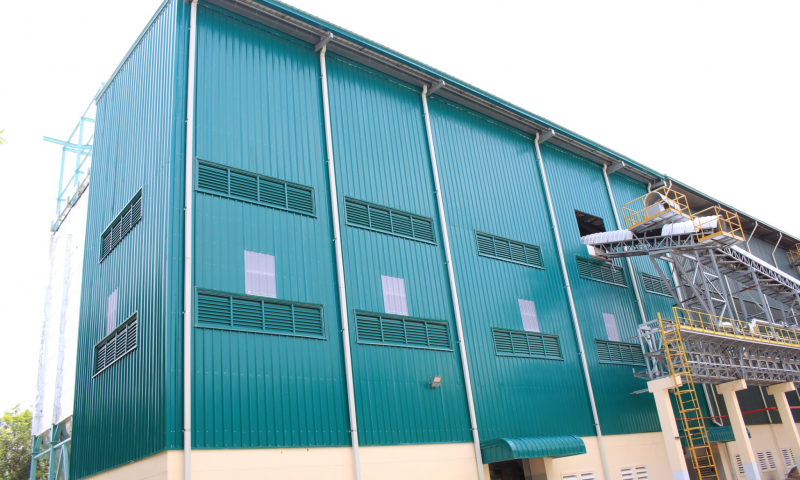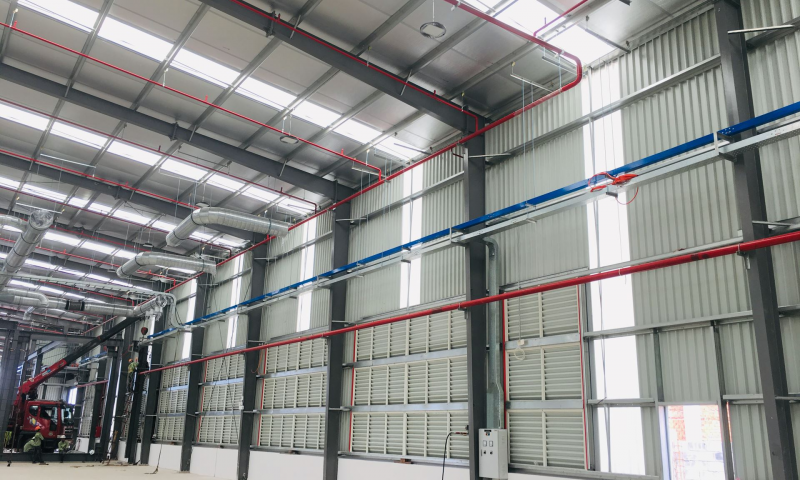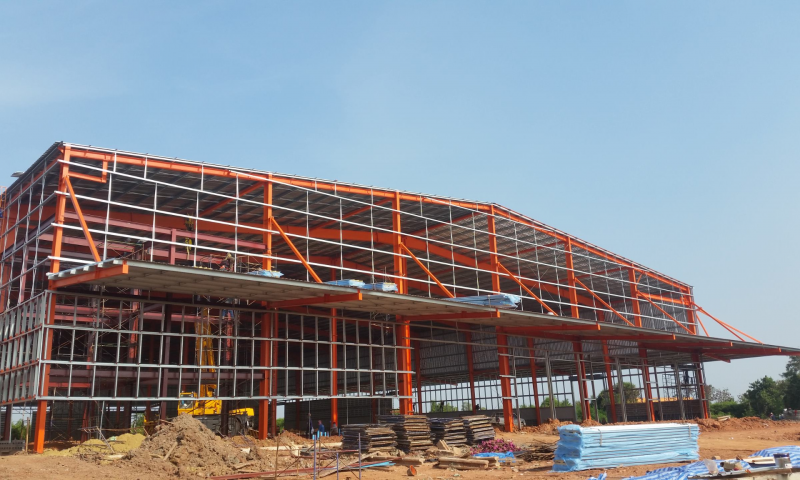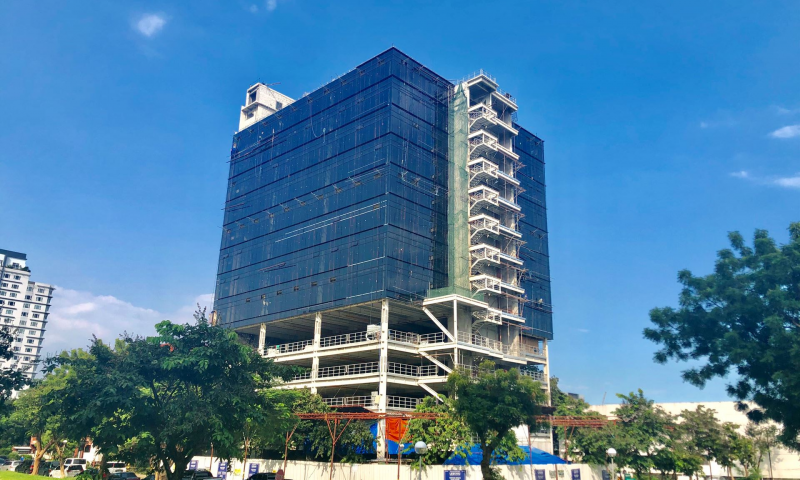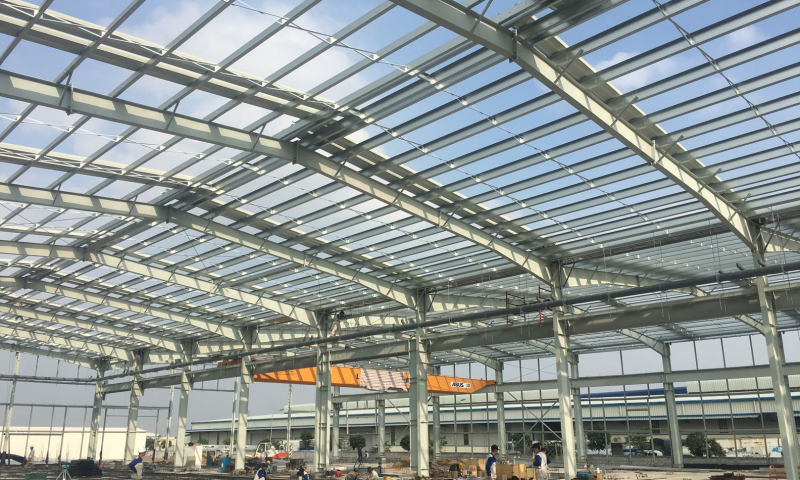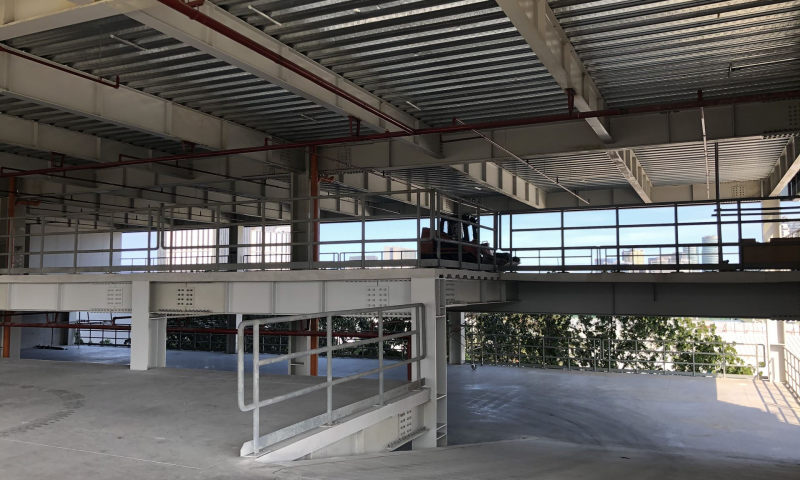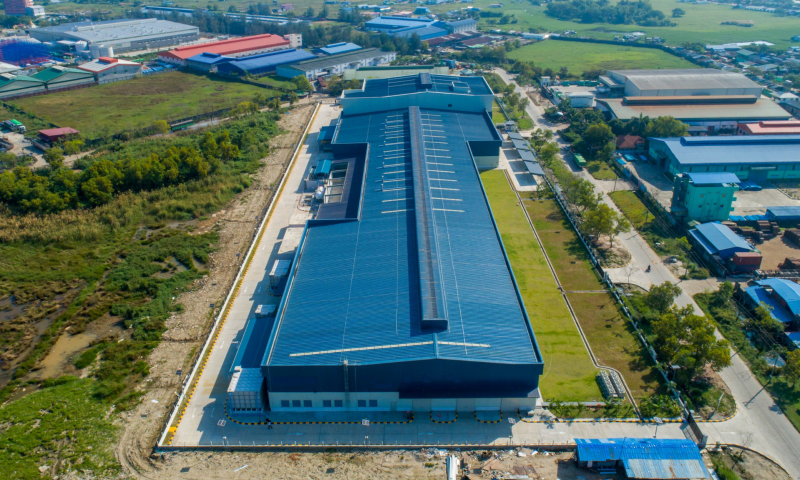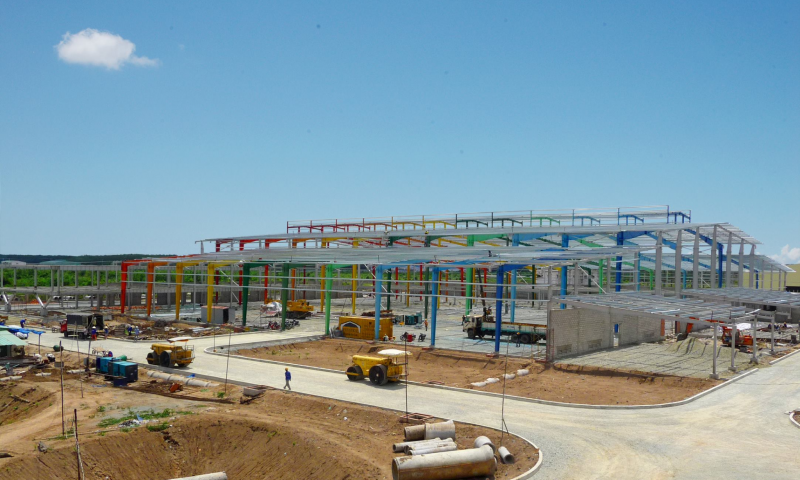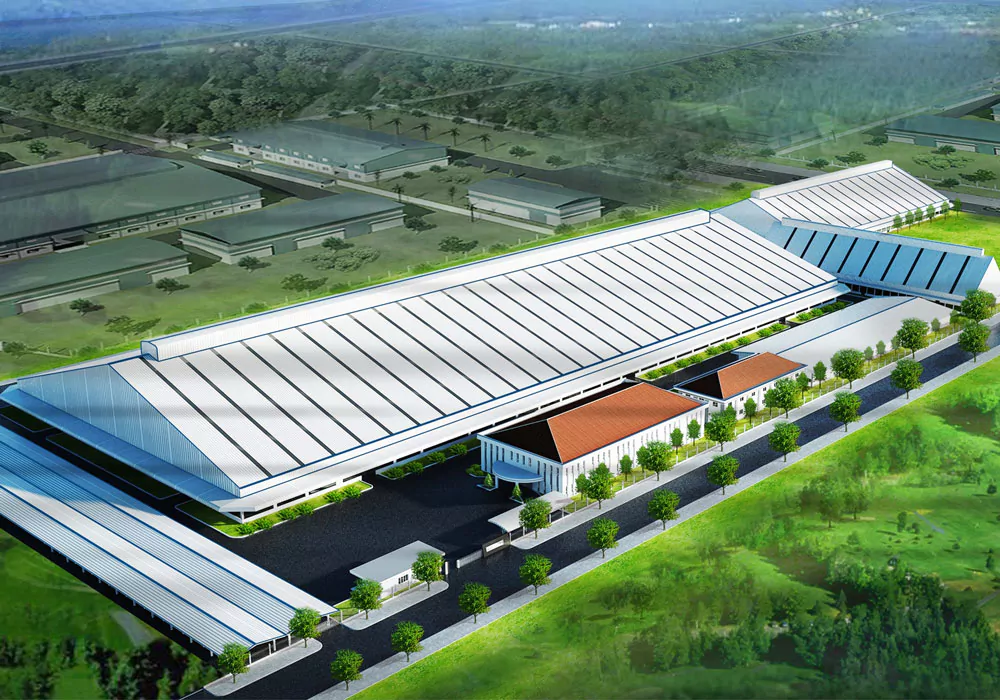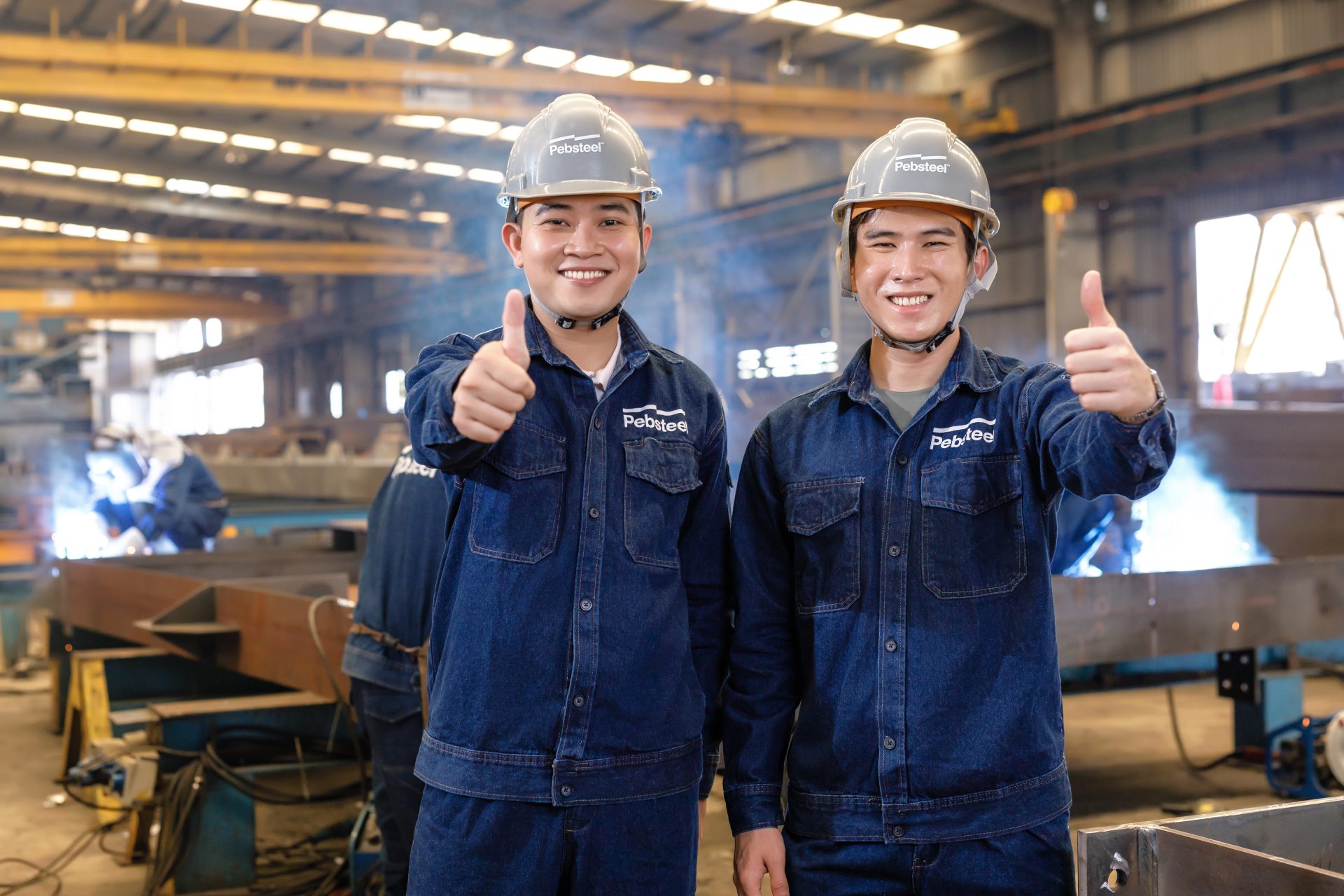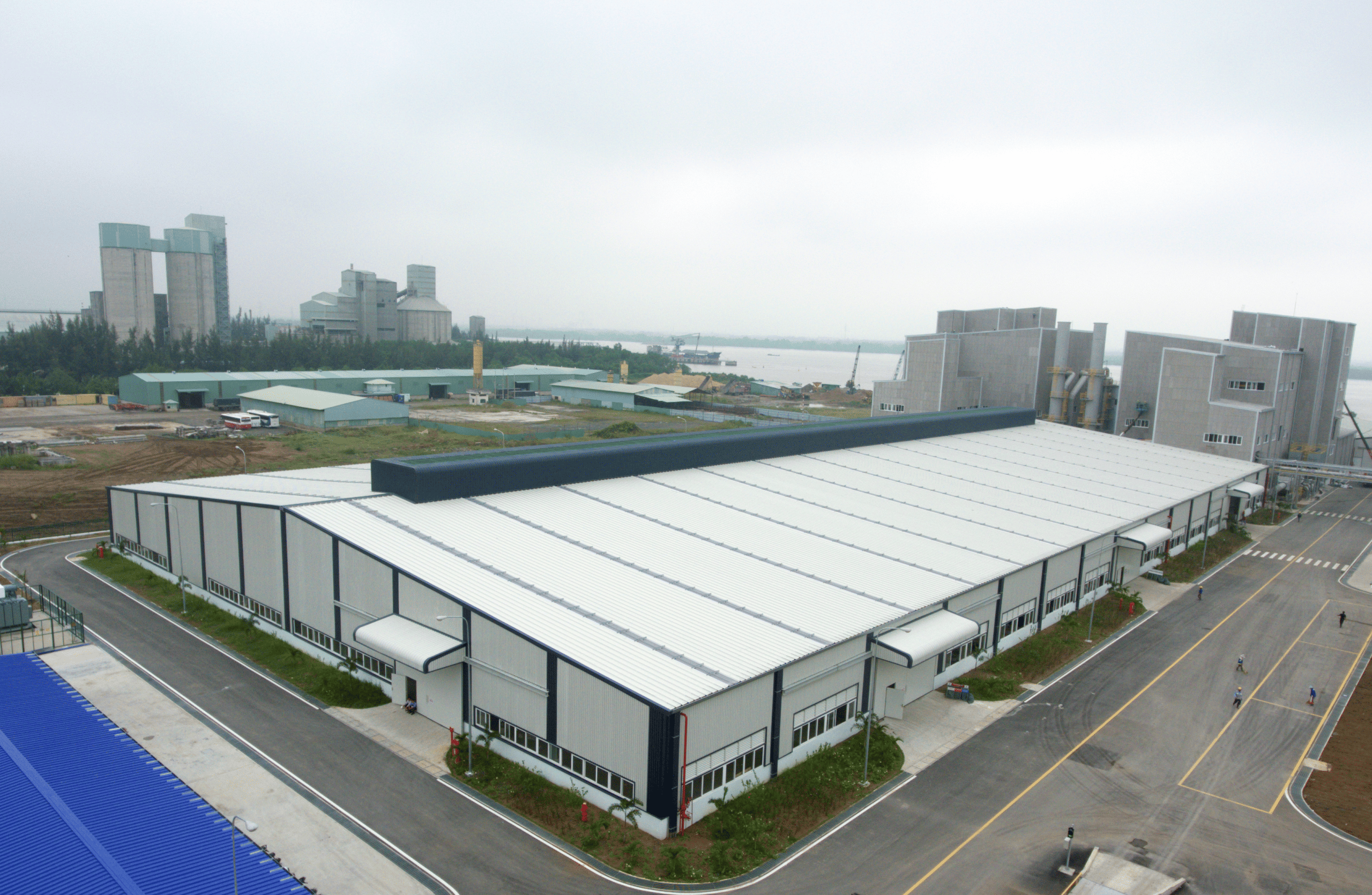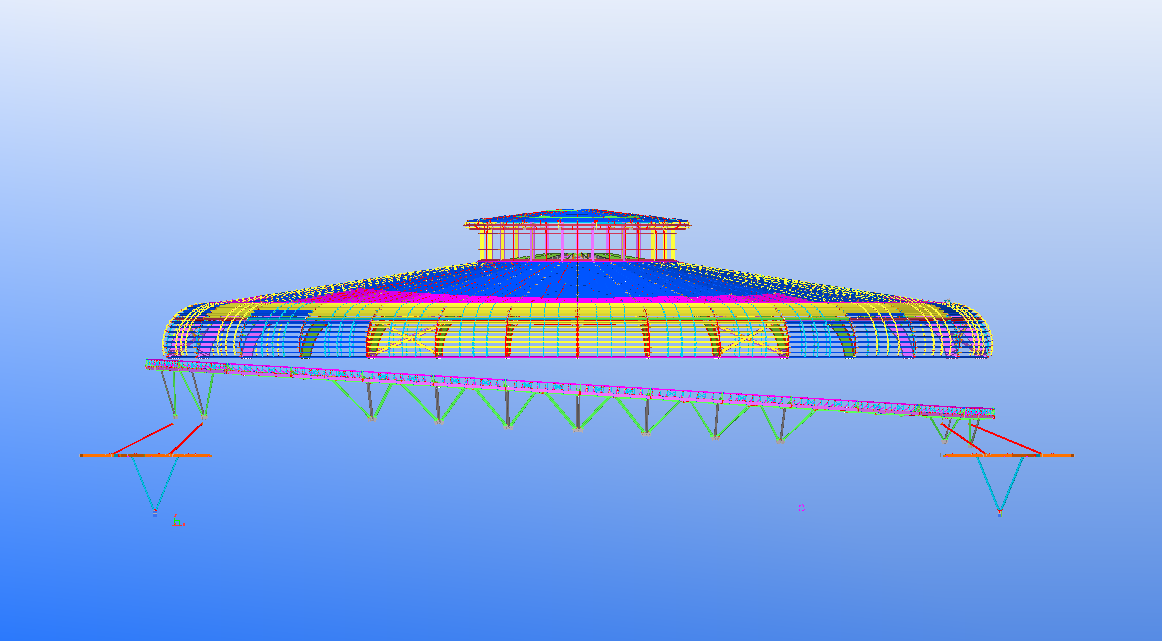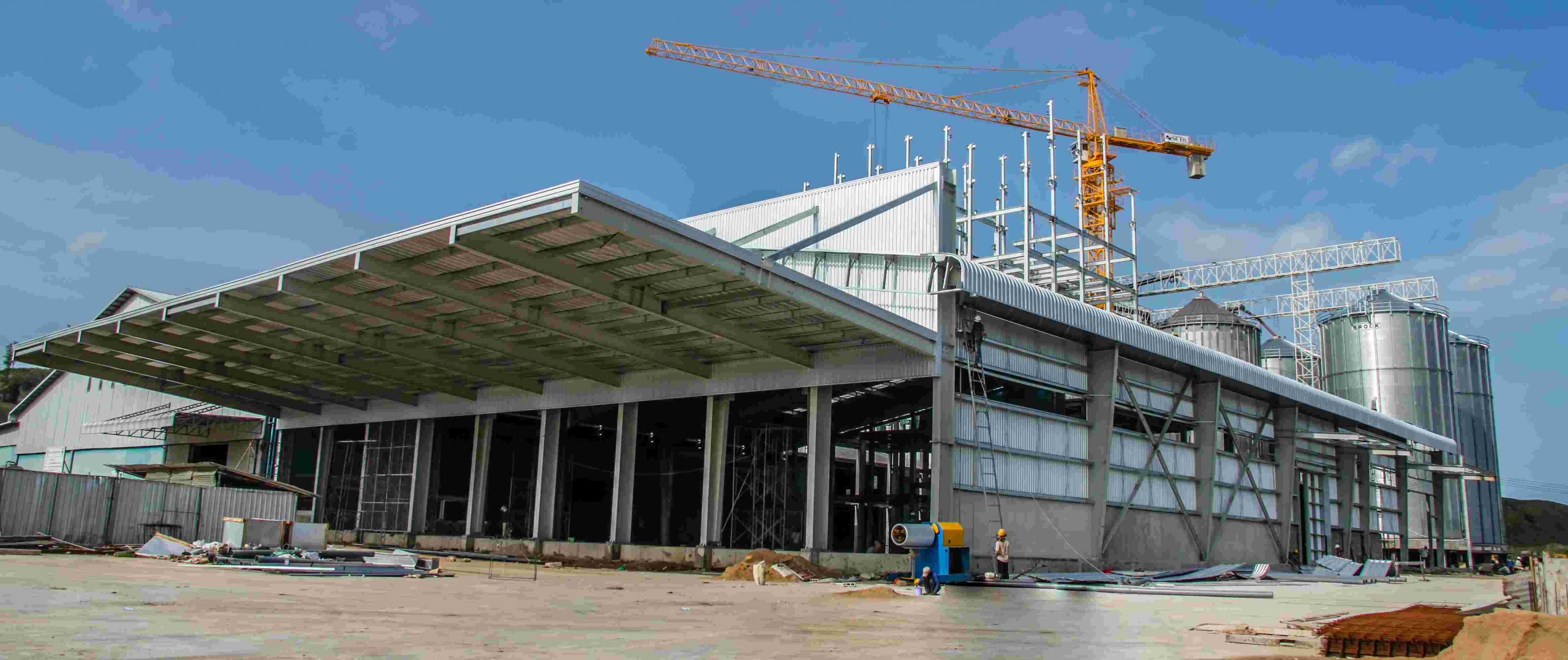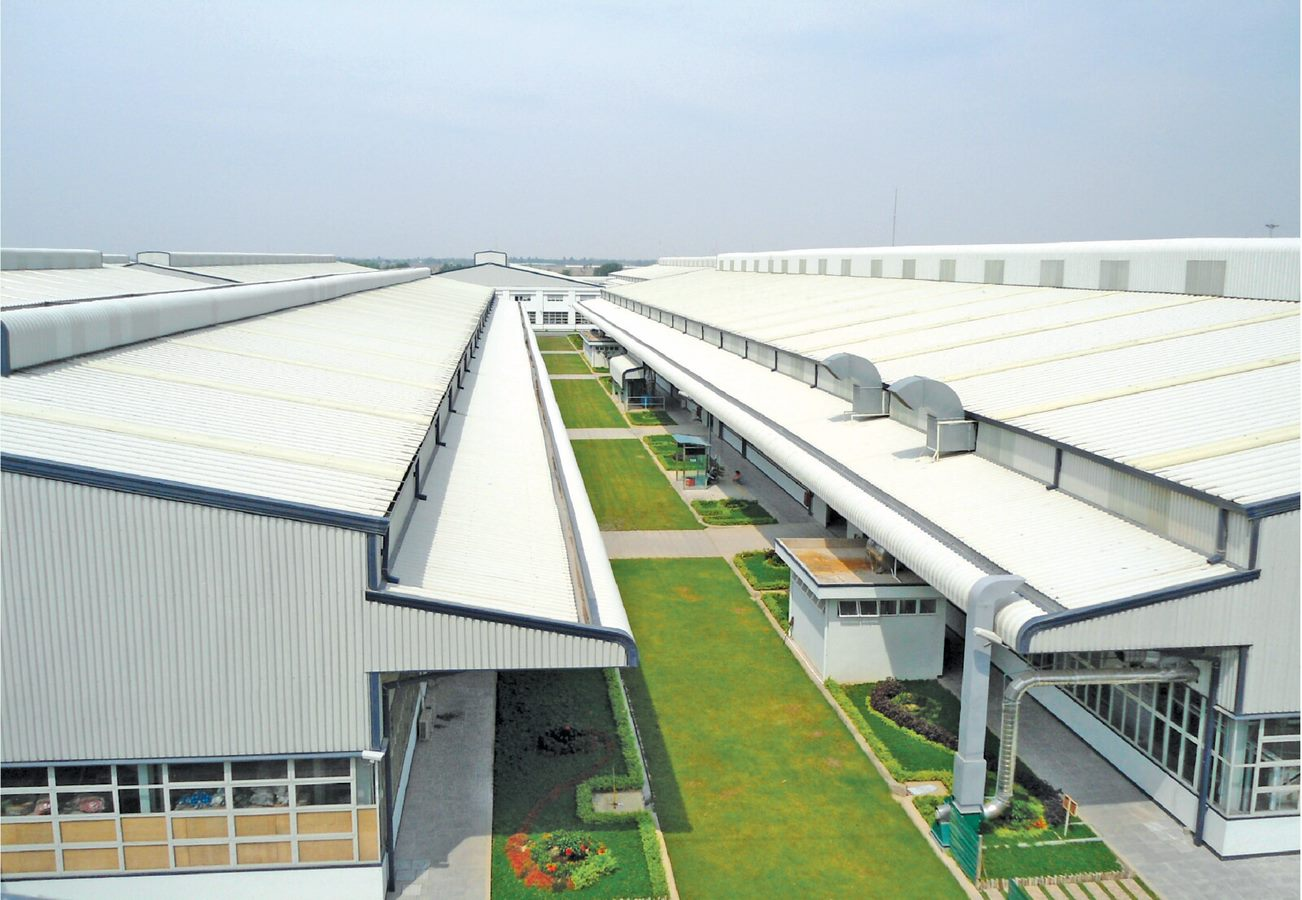Prefabricated steel buildings are increasingly favored for their flexibility, rapid construction, and cost-effectiveness. However, ensuring quality and durability for the structure requires a careful selection of suitable steel materials. This article will outline the considerations to keep in mind when choosing steel materials for pre-engineered steel buildings, aiding in optimizing efficiency and cost savings.
1. Benefits of Selecting Appropriate Steel Materials for Prefabricated Steel Buildings
Steel materials are the ideal choice for constructing structures that require high stability, such as high-rise buildings, bridges, and important infrastructure projects, due to various benefits:
- High Durability: Steel has an exceptional strength-to-weight ratio, allowing structures to withstand heavy loads without the need for numerous supports. Resist harsh environments, and are fire-resistant, ensuring safety.
- Energy Efficiency: Insulated steel reduces heat transfer. Designs allow for maximizing natural light, reducing the need for electric lighting.
- Cost Savings: Steel is competitively priced, reducing labor and maintenance costs by up to 50% compared to reinforced concrete.
- Environmentally Friendly: Steel can be 100% recycled, reducing construction waste. Construction generates less dust and noise, uses less water, minimizes waste, and protects natural resources.
Increasing the durability and lifespan of prefabricated steel building structures.
2. Factors to Consider When Choosing Steel Materials for Prefabricated Steel Buildings
2.1. Durability
Regarding steel grades, when constructing prefabricated steel buildings, it is crucial to consider the appropriate grade of steel that meets the requirements for load-bearing, durability, and environmental conditions.
For Example: Q300, SS400 may be suitable for standard warehouses, while Q345, SS450 are preferable for warehouses with high loads.
For the thickness of steel , it is necessary to select the appropriate thickness that matches the span, beam spacing, load-bearing capacity, and safety requirements. Using steel with optimal thickness helps avoid excess or insufficient material.
Ensure that the selected steel type (ASTM, JIS, TCVN) meets the appropriate standards to ensure quality while maintaining cost-effectiveness.
Consider factors related to the durability of prefabricated steel buildings
2.2. Corrosion Resistance
Corrosion significantly impacts the lifespan, maintenance, and aesthetics of steel structures, especially in harsh environments. When designing, it is necessary to pay attention to corrosion prevention measures such as effective drainage systems and well-ventilated prefabricated steel building structures.
For environments with acids, salt, or high humidity, galvanized steel or epoxy paint should be chosen. For relatively normal environments, electrostatic painting can be considered as an alternative.
Fire resistance when selecting steel materials.
2.3. Fire Resistance
Risk of Fire and Explosion
Determine the risk of fire and explosion of the construction based on the type of activities, storage materials, and population density.
For example: Chemical storage warehouses or manufacturing plants have a higher risk of fire and explosion compared to offices or residential buildings.
Steel materials help save construction costs.
Fire Resistance Requirements
Regulations on fire resistance requirements for construction items according to fire fighting and prevention standards.
Common fire resistance durations include 30 minutes, 60 minutes, 90 minutes, 120 minutes, 150 minutes, and 180 minutes.
For example: warehouses containing hazardous chemicals require longer fire resistance durations compared to residential buildings.
Optimizing the efficiency of prefabricated steel building construction
Construction Methods
Choose appropriate fire-resistant coating methods:
- Spray painting method: Cost-effective, rapid construction.
- Panel cladding method: High efficiency, good aesthetics.
When constructing prefabricated steel buildings, it is essential to select suitable methods based on the type of steel , component sizes, and construction conditions.
Quality Certifications
Before constructing prefabricated steel buildings, suppliers should provide quality certifications for fire-resistant steel and fire-resistant paint/coating. Additionally, other certifications such as quality assurance, durability, and material performance should be considered.
2.4. Cost Efficiency
Efficient Utilization Calculation
When constructing prefabricated steel buildings, it’s important to select appropriate sizes to avoid material waste due to excess cutting or shortages. Additionally, consider using recycled steel to save costs and contribute to environmental protection.
Choosing Construction Methods
Prefabricated steel building construction should employ rational construction methods that are suitable for actual conditions, saving time and labor.
Minimizing Material Waste
Apply construction measures to minimize waste and material damage during construction. At the same time, utilize the remaining steel scrap for other items. Throughout the prefabricated steel building construction process, it is necessary to monitor and control the procurement and construction costs of steel materials.
Carefully consider the cost-effectiveness when constructing prefabricated steel buildings
2.5. Structural Requirements
To ensure safety, durability, and efficiency of use for prefabricated steel buildings, it is important to consider the following structural requirements after selecting steel materials:
- Load-bearing Capacity:
It is necessary to choose steel materials with appropriate strength to meet the loads of the structure, including dead loads (self-weight), live loads (machinery, equipment, goods), wind and rain loads, and dynamic loads.
- Hardness and Stability:
The steel materials need to possess high hardness and stability to ensure that prefabricated steel structures remain stable, without sagging, warping, or vibrating under the action of the loads. Choosing steel with suitable thickness and size, combined with effective connection systems and reinforcement to ensure hardness and stability for the structure.
Requirements for the structure of prefabricated steel buildings
2.6. Sustainability and Environmental Impact
Choosing Green Steel Suppliers
Prioritize suppliers that implement environmentally friendly steel production processes, utilizing modern technology to save energy and minimize emissions.
It is necessary to pay attention to the application of effective wastewater and solid waste treatment measures, and to select suppliers with certifications for sustainable production, such as LEED or ISO 14001.
Optimized Design
In the design phase, emphasis should be placed on minimizing the necessary amount of materials, utilizing natural light, and passive ventilation to reduce energy consumption. Additionally, the selection of environmentally friendly insulation and waterproofing materials should also be considered.
Focusing on sustainability and environmental impact of prefabricated steel buildings
2.7. Aesthetic Considerations
Prefabricated steel buildings must not only ensure quality and durability but also meet aesthetic requirements, harmonizing with the surrounding landscape and fitting the intended purpose. Below are important factors to consider:
Design and Color
- Style: Choose a design that aligns with desired architectural styles (modern, classical).
- Color: Utilize a variety of painted steel colors to create focal points for the structure.
- Combination with other materials: Combine steel with materials like glass, wood, and stone to enhance aesthetics.
Surface Treatment of Steel
- Galvanization: Provides a shiny surface, and excellent rust resistance.
- Powder coating: Smooth surface, diverse colors, high durability.
- Corten steel: Creates a unique natural rust effect.
Detailed Design
- Pay attention to small details: Joints, welds, edges, etc.
- Design lighting systems: Create highlights at night.
- Use decorative elements: Logos, signage, etc.
Considerations for aesthetics during prefabricated steel building construction
Choosing the right steel materials for prefabricated steel buildings is the first step to owning a durable, cost-effective structure that maximizes efficiency. Hoping the information shared in this article will help you make effective choices for your prefabricated steel building construction process.
For comprehensive solutions in prefabricated steel building construction, feel free to contact Pebsteel via email at marketing@pebsteel.com.vn or phone at (+84) 908 883 531 for immediate assistance!
*** This article is intended to provide general information about the pre-engineered steel building and steel structure industry only. For further details or clarification based on your needs, please contact Pebsteel directly.

